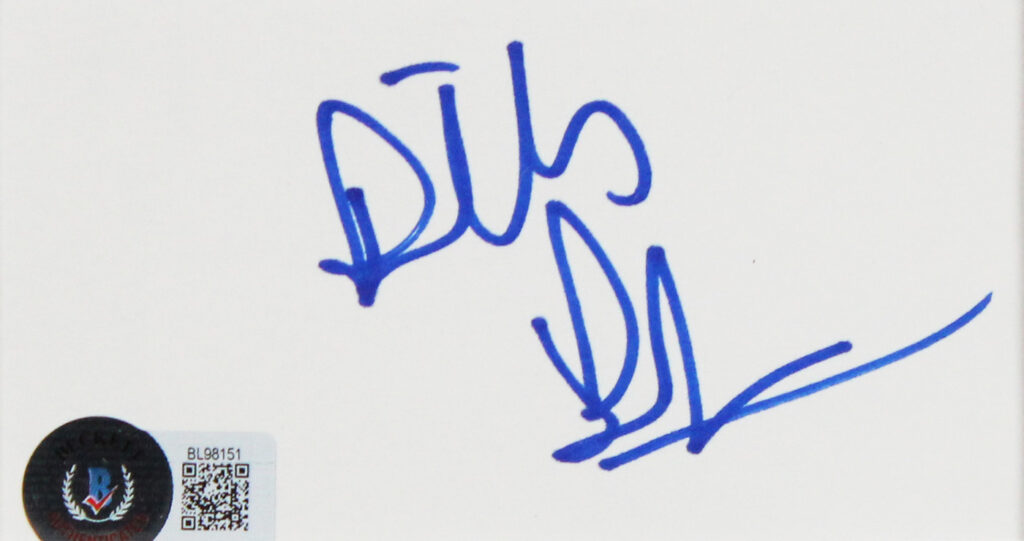In the world of autograph collecting and reselling, the choice of ink color isn’t just a matter of aesthetics—it’s steeped in tradition, myths, and practical considerations that can significantly impact an item’s value and perceived authenticity. Blue ink, particularly from Sharpie markers, has become a focal point in this niche market. For resellers, blue signatures often signal a premium product, but they also carry baggage from longstanding rumors about forgery. This article dives into what blue ink really means for reselling autographs, why resellers favor it, and whether it truly makes faking signatures easier.
The Significance of Blue Ink in Autograph Authenticity
Blue ink has long been associated with authenticity in certain collecting circles, especially sports memorabilia like baseball cards, photos, and balls. Collectors and authenticators often view blue Sharpie signatures as a hallmark of genuine, in-person autographs. This stems from historical practices: in the 1990s, players used blue or red Sharpies to distinguish their signatures from black-ink printed inserts in trading cards. On black-and-white photos or light-colored items, blue ink “stands out” and “floats,” providing better visibility and contrast than black, which can blend into backgrounds. For resellers, this means blue-signed items can fetch higher prices because they align with collector preferences—think a signed baseball where blue pops against the white leather.
In resale markets like eBay or auction houses, certified autographs (e.g., from PSA/DNA or JSA) in blue ink are commonplace and highly sought after. Blue is seen as a “premium” choice for its vibrancy, and many resellers stock blue Sharpies specifically for events or signings to enhance marketability. However, this preference isn’t universal; on glossy cards or items exposed to light, blue can fade faster or “run,” potentially decreasing long-term value. Despite this, the association with authenticity often outweighs the risks, making blue a go-to for resellers aiming to maximize appeal.
Why Do Resellers Use Blue Ink?
Resellers gravitate toward blue ink for several practical and market-driven reasons. First, it’s about visibility and durability in specific contexts. Blue Sharpie lasts longer without yellowing compared to older black formulations, which could develop a “halo” effect over time. On items like photos or jerseys, blue provides superior contrast, making the signature more eye-catching and thus more sellable. Collectors forums emphasize that blue “holds up better” on certain materials, like non-glossy cards from the 1980s.
Market tradition plays a big role too. In sports autograph sessions, blue Sharpies are standard because they’re smooth, quick-drying, and work on various surfaces—ideal for high-volume signings. Resellers use blue to mimic what buyers expect; for instance, many certified Topps cards feature blue autographs, reinforcing its status as an “authentic” look. Forgers, ironically, exploit this by using blue on fakes to trick buyers into believing they’re getting the real deal, as blue has become a perceived marker of legitimacy. From a business perspective, resellers prioritize blue because it aligns with collector demand, potentially increasing resale value by 10-20% for visually striking items.
Does Blue Ink Make It Easier to Create Fake Signatures?
This is where the myths come in. A persistent urban legend claims that blue ink is easier to forge, leading many celebrities and athletes to refuse blue pens outright. The reasoning? Blue signatures can supposedly be scanned, copied, or transferred more easily onto other memorabilia using digital tools or old-school methods like lifting ink. This belief may originate from document signing practices, where blue ink distinguishes originals from black photocopies. In autographs, the idea is that forgers can replicate blue more convincingly, perhaps because it mimics common Sharpie hues.
However, experts and collectors largely debunk this as outdated nonsense. With modern technology like high-resolution scanners and Photoshop, any color—including black, silver, or gold—can be forged equally well. Forgers don’t rely on ink color; they use screenshots, templates, or even AI to create high-quality replicas. In fact, Sharpie autographs in general are easier to spot as authentic because of their bold, permanent marks, regardless of color. The “blue is easier to fake” trope persists due to misinformation, but it doesn’t hold up—celebrities who avoid blue are often just following an old wives’ tale.
That said, the myth influences the market: Resellers might avoid blue for high-profile items to sidestep buyer skepticism, while forgers use it to capitalize on its “authentic” vibe. Ultimately, authenticity comes down to certification, not color—always verify through reputable services.
Final Thoughts: Navigating Ink Choices in Reselling
For resellers, blue ink represents a double-edged sword: it’s visually appealing and tied to tradition, boosting resale potential, but it carries fading risks and forgery folklore. If you’re reselling, opt for blue on items where it enhances visibility, like photos or balls, but store them away from light to preserve value. For buyers, don’t let color alone sway you—focus on provenance and third-party authentication. In a market flooded with fakes, understanding these nuances can mean the difference between a valuable collectible and a costly mistake. Whether blue or black, the real value lies in the story behind the signature.


